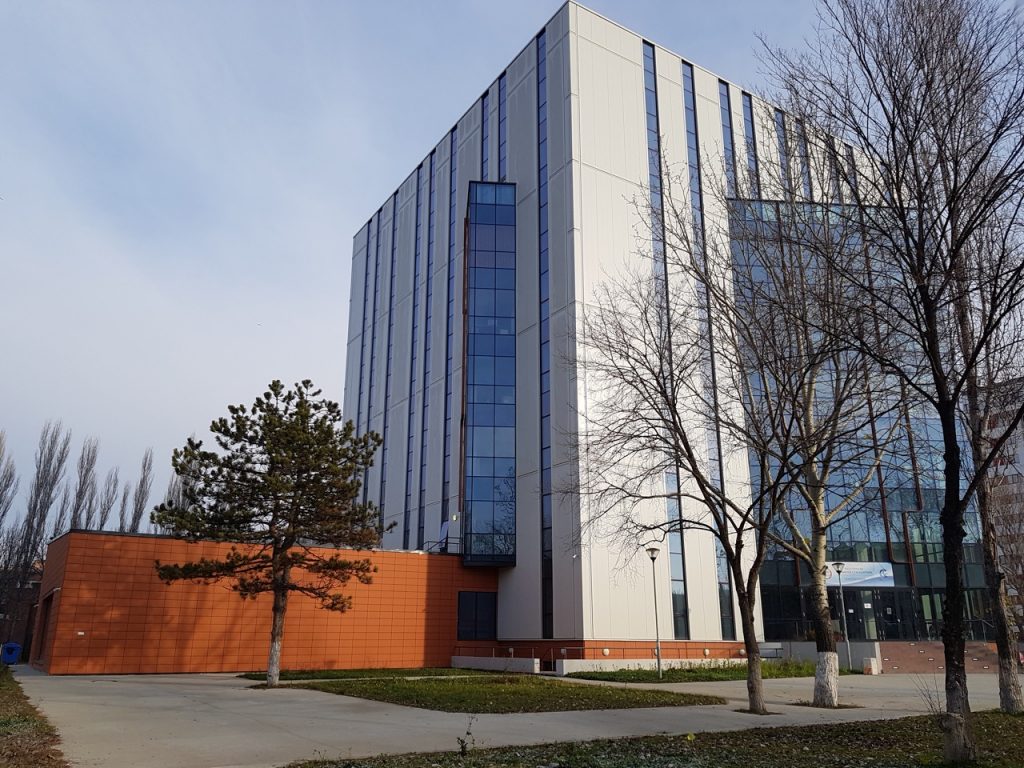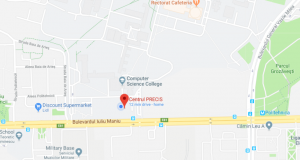Reaching the conference venue
The conference venue is located within the campus of University Politehnica of Bucharest. The exact address is Blvd. Iuliu Maniu nr. 6, Sector 6, Bucharest. The map with the location is shown below.
To reach the conference venue from your hotel, it is easiest to use Uber or a taxi.
You can also reach the venue by metro (Bucharest’s underground transportation system). From Piata Unirii metro station, take a train headed in the Preciziei direction and get off at the Politehnica station (3 stops). Once you exit the metro, take the exit towards the rear of the train, and once at street level go towards the nearest traffic lights (where a new concrete/glass building is in construction) , cross and then walk on for about 5 minutes. The Precis Building will be on your right.
General Information
Bucharest is the capital of Romania, the largest Eastern European country with 20 million inhabitants and a surface similar to the UK. To many foreigners, Romania is famous for its Count Dracula, a legend written by Bram Stoker based on the cruel Valachian ruler Vlad Tepes (i.e., the Impaler, in power 1431-1476).
Bucharest has around 3 million inhabitants and has a booming economy, rich cultural scene and a vibrant lifestyle. Bucharest has earned the nickname of “Little Paris” in the early 20th century due to its French-inspired architecture and its numerous landmarks interspersed with beautiful parks. The architecture offers an intriguing contrast between the low-rise city center and the communist era with densely built neighborhoods that lie in the vicinity. This architecture, coupled with lively nightlife, easy-going local attitude and low prices has made Bucharest a hot destination for European and middle-Eastern travelers. However, Bucharest is still fairly green as a tourist destination, which increases its charm to potential visitors.
Cuisine
The Romanian cuisine resembles the Mediterranean cuisine with Turkish and Hungarian influences. Traditional dishes include “sarmale” (rolled minced meat in pickled cabbage leaves), “mititei” (a Romanian version of garlicky hamburgers), or “ciorba de burta” (tripe soup).
Local Industry
Bucharest’s economy is mainly based on services, and IT plays a central role: companies such as IXIA, NXP, IBM, Oracle, Adobe and Amazon have major R&D centers. Together with large Romanian companies such as BitDefender or Softwin, IT hires tens of thousands of highly skilled engineers only in Bucharest.
Safety
Bucharest is a safe city, being rated as “low” crime by OSAC. As in any major city, there are pickpockets and con-men, but very few, if any, carry weapons. As an example of what safe means, many women jog after dark (10-12pm) in all the central parks in summer.
Local Travel
Bucharest has a good underground system with three lines that connect the major parts of the city. Buses, trams and trolleybuses are also available and a good way to move around. Traffic is normally quite busy, however it is quiet in August since students and many locals are on holiday. We plan to include bus and underground passes for the entire HPSR week as part of the conference package.
Airport
The main airport of Bucharest is Otopeni, located 15km away from the city center and reachable by taxi (20-30mins), bus (45mins) or train (1h). Otopeni is reachable from all major European cities via multiple flights per day (e.g. 6 flights from London, 6 from Frankfurt, 4 from Paris daily), and there are direct connections to hubs in Asia (Dubai and Doha). The flight time to Bucharest from within Europe is three hours or less. There are no direct American flights, but short (1-2h) layovers are typically available in Paris, Amsterdam, Frankfurt, Rome or London. Minimum flight times including layovers to Eastern US are around 12-13 hours, and 16-17 hours to the West coast.




